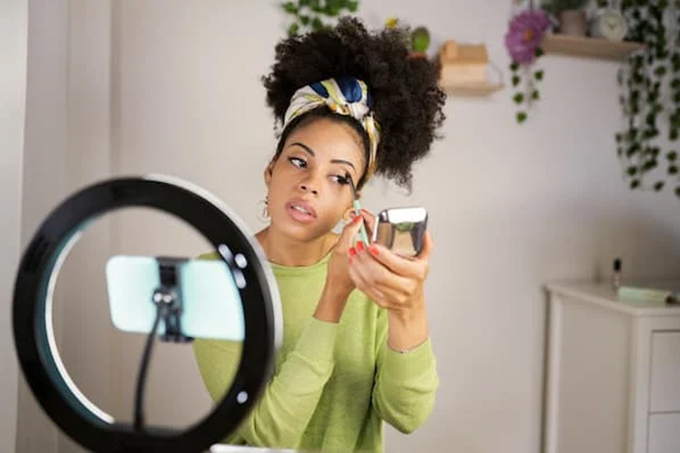
A new social media trend has recently emerged in response to the materialistic nature of influencer culture: deinfluencing. This trend involves influencers discouraging their followers from buying overpriced or ineffective products.
Influencing is a highly profitable form of marketing, reaching a market value of US$16.4 billion in 2022. But by its nature, influencing can also be disingenuous. Influencers often end up promoting products they don’t believe in, or that don’t align with their follower base.
The deinfluencing trend is shaking up this model. The trend has quickly gained momentum, with nearly 730 million views on TikTok as of July 7. There are a few reasons for its growing popularity, including a desire for authenticity, social media burnout and a shift in values.
Desire for authenticity
The growing demand for authentic and unfiltered content online has given rise to both micro-influencers and the deinfluencing trend.
Micro-influencers typically have a follower base ranging between 10,000 to 100,000. They build a tight-knit community with their followers and can have significant impact on their purchase decisions.
In response to the desire for authenticity, deinfluencers prioritize genuine content and real engagement over the meticulously curated content and commercial partnerships that are common in traditional influencer culture.
Social media burnout
Social media burnout refers to the emotional exhaustion caused by the constant pressure to maintain an idealized image on digital platforms. This issue affects both influencers and their followers.
The journey from being an ordinary consumer to becoming a brand influencer involves a significant shift in mindset, since influencers must maintain brand consistency to ensure a positive image. This pressure often leads to burnout over time.
On the flip side, a large number of consumers are exposed to idealized lifestyles through influencers. This often compels individuals to attempt to imitate or adapt to these lifestyles, leading to burnout and potential mental health challenges in the long run.
Deinfluencing addresses these challenges for both consumers and influencers by encouraging influencers to step away from the constant pressure of maintaining a perfect image and supporting better mental health.
For consumers, deinfluencing offers a more balanced and realistic perspective on life, resulting in individuals feeling less pressured to live up to unrealistic standards.
Shift in values
The evolution of societal values towards transparency, honesty and genuine connection aligns with a greater consciousness about sustainability.
In a recent paper, my colleagues and I examined over 440,000 YouTube comments from 2011 to 2021 and found an increase in conversations about sustainable fashion.
The deinfluencing movement is positioned at this intersection, contrasting sharply with the traditional influencer culture that often fuels rampant consumerism and wasteful habits.
Deinfluencers are in a unique position to foster a more sustainable approach to consumption. Rather than promoting the latest products or trends, they highlight mindful consumption, sustainability and the importance of making thoughtful choices.
This approach is a key response to the overconsumption often seen in traditional influencer culture, which can lead to unnecessary waste and contribute to environmental degradation over time.
Is it only positive?
While the deinfluencing trend may be positive, there are some side-effects that need to be examined carefully.
One concern is the emergence of pseudo-authenticity, where the pursuit of authenticity is exploited for commercial gain. Influencers may end up projecting an image of authenticity while still actually being motivated by financial interests.
Another challenge is the risk of misinformation, particularly in relation to sustainability. While many deinfluencers may advocate for sustainable practices, they may lack the expertise to provide accurate information. This could lead to them misleading followers who rely on them for information and guidance.
Additionally, the emphasis on authenticity and openness could lead to oversharing. Deinfluencers might feel compelled to share intimate details of their private lives in the pursuit of being real with their audience. However, this can cross boundaries of privacy, potentially causing more harm than good.
For the sake of mental health, it’s important for deinfluencers to strike a balance between being relatable and maintaining their own personal boundaries.
What does this mean for businesses?
The deinfluencing trend introduces new dynamics for businesses in the digital landscape. While it may disrupt traditional marketing approaches that rely on polished images and celebrity endorsements, it also offers an opportunity to connect with customers on a more genuine level.
By embracing deinfluencing practices, businesses can tap into the authentic relationships influencers build with their followers, potentially boosting trust and engagement.
The emphasis on sustainability among deinfluencers also aligns with the growing consumer demand for responsible practices, providing businesses with an avenue to showcase their commitment to these values.
However, businesses must ensure their collaborations genuinely reflect their values to avoid the trap of pseudo-authenticity, which could harm their reputation and result in accusations of greenwashing.
Author Bio: Omar H. Fares is a Lecturer in the Ted Rogers School of Retail Management at Toronto Metropolitan University
